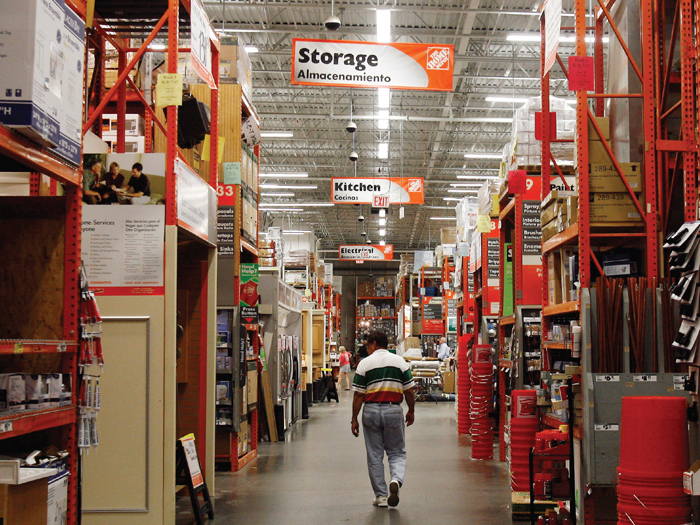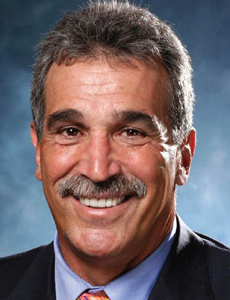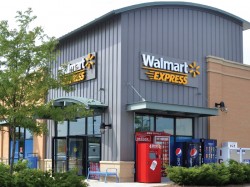Industry Risk Report
Hurdles Remain for Retailers

Like other forward-thinking U.S. retailers, Wal-Mart is actively trying to find new ways to reach out to current and prospective customers.
“Wal-Mart is trying to bridge physical and digital, and help our customers get what they want, when they want it and how they want it,” Brian Monahan, vice president of marketing for Walmart.com, said at a recent e-commerce trade conference.
Facing heightened competition as never before, retailers face major risks (as outlined in their Form 10-K filings with the U.S. Securities and Exchange Commission) as well as new opportunities.
Using that SEC data as well as surveys, reports and observations from experts, Risk & Insurance® has identified five top risks facing U.S. retailers in 2014.
1) The overall economy remains lackluster
Worries about general economic conditions rank as the No. 1 retailer concern, according to risk factors listed in the most recent 10-K filings of the 100 largest public U.S. retailers, compiled by BDO USA, a professional services firm. The economy was the top risk for the second straight year.
There appears to be light at the end of the tunnel, though.
Jan Hatzius, chief economist of global investment research at Goldman Sachs, observed: “We don’t think weakness in the first quarter was really representative of what’s going on economically. We actually are seeing clear acceleration in underlying growth both in the United States and Europe.”
BDO found that interest rates (80 percent) overtook fuel prices (74 percent) and unemployment (70 percent) as the most frequently cited general economic concern, for the first time in the study’s eight annual analyses.
While the slowly improving job market bodes well for retailers, it is heightening concerns that the Federal Reserve may move to increase interest rates after five years of historic lows.
“In addition to the potential impact on consumer spending and sales, retailers also express concern that changes in interest rates could impact their debt financing and pension plan assets,” the BDO report noted.
Al Ferrara, New York-based national director of the retail and consumer products practice at BDO, emphasized that he believed that the top general economic concern is $5 or more for a gallon of gas.
“If there’s anything that’s going to have an impact on Middle America, it’s the price of gas,” said Ferrara. “That just sucks money right out of the economy.”
Uncertainty about currency rate fluctuations is also a concern for global retailers.
According to Apple, demand for its products “could differ considerably as a result of currency fluctuations because the company generally raises prices on goods and services sold outside the United States to correspond with a strengthening of the U.S. dollar.”
Wal-Mart, the world’s largest retailer, noted that currency rate fluctuations negatively impacted its first-quarter financial results. The company said its net sales would have increased by 2.1 percent without currency rate fluctuations. With fluctuations, net sales were $1.6 billion lower.
The Kroger Co. grocery chain, one of the world’s largest retail chains, said volatility in the global economy has been due to uncertainties related to “energy prices, availability of credit, difficulties in the banking and financial services sectors, and the decline in the housing market, diminished market liquidity, low consumer confidence and high unemployment rates.”
As a result, consumers have become more cautious and have reduced spending and switched to less expensive mixes of products, it said.
“They also have been patronizing discounters and dollar stores to a greater extent, all of which has affected and could continue to affect our sales growth and earnings,” according to Kroger.
2) Inability to penetrate emerging markets
“Especially for Western companies, understanding emerging markets is an undeniable (but blatantly obvious) opportunity,” one retail panelist noted in an Ernst & Young LLP survey of top 10 risks facing the retail sector.
“The size of the global middle class is expected to triple between now and 2030,” said EY.
“Yet 29 percent of retail sector respondents to our global survey reported that their efforts to enter these markets had yet to produce any positive results,” according to EY.
That may be compounded by the risks involved in such expansion, according to BDO’s survey.
Eight in 10 retailers cite international risks, including managing a dispersed workforce and complying with international laws and regulations such as the Foreign Corrupt Practices Act, the report noted.
Nonetheless, it noted that “many companies are also looking abroad for opportunities to introduce or expand their brand,” including the Gap and several teen apparel retailers, the report noted.
Amazon, the world’s largest online retailer, said that while it is rapidly and significantly expanding its global operations, including its product and service operations, the expansion increases the complexity of its business and places significant strain on its management, personnel, operational systems, technological performance, financial resources and internal financial control and reporting functions.
Amazon noted, “We may not be able to manage growth effectively, which could damage our reputation, limit our growth and negatively affect our operating results.”
However, Amazon added, “Our international activities are significant to our revenues and profits, and we plan to further expand internationally.”
3) Regulation and labor challenges
In its annual report, BDO noted that federal regulation remains top of mind for retailers, especially as the government considers data privacy and minimum wage legislation.
“At the same time, public retailers are also seeing regulators place increased scrutiny on internal controls,” the report said, with 87 percent of retailers noting concerns related to accounting standards and regulations, a significant increase from 2013 (69 percent) and the most in the report’s history.
Much of this pressure can be attributed to a renewed focus by companies, auditors and regulators on internal controls, including the new Committee of Sponsoring Organizations (COSO) internal control framework published in 2013
“The increasing costs and other effects of compliance with U.S. and overseas regulations affecting our workforce and our labor practices … ” are major concerns. — McDonald’s
McDonald’s also cited compliance as a concern, and noted it faced often conflicting standards imposed by local, state and federal authorities in the United States. Unsuccessfully complying with such regulations, it said, can adversely affect popular perceptions of its business and expose it to litigation or government investigations or proceedings.
“The increasing costs and other effects of compliance with U.S. and overseas regulations affecting our workforce and our labor practices, including regulations relating to wage and hour practices, workplace conditions, healthcare, immigration, retirement and other employee benefits and unlawful workplace discrimination” are major concerns, the company said.
At Kroger, a majority of the company’s 343,000 full- and part-time employees are covered by collective bargaining agreements negotiated with local unions affiliated with one of several different international unions. There are approximately 300 such agreements.
“These negotiations are challenging as the company seeks competitive cost structures in each market while meeting our associates’ needs for good wages and affordable healthcare,” the company said.
Prices of certain commodity products also affect government regulation and taxes, Costco noted.
“If there’s anything that’s going to have an impact on Middle America, it’s the price of gas. That just sucks money right out of the economy.” — Al Ferrara, national director, retail and consumer products practice, BDO
“They are subject to fluctuations arising from changes in domestic and international supply and demand, labor costs, competition, market fluctuation, government regulations, taxes and periodic delays in delivery,” the company said.
“Rapid and significant changes in commodity prices may affect our sales and profit margins,” it said.
BDO’s Ferrara noted that as long as the borders are open, and U.S. retailers are free to sell as well to buy, retailers are generally satisfied.
“Some of this is a big concern because retailers want to get the message out to regulators that their business could be hurt if the government ever starts to constrain imports — there could be some real issues on the supply chain,” Ferrara said.
4) Supply chain failure
EY noted that the supply chain presents a significant opportunity for retailers to reduce inefficiencies and compete on cost, which is increasingly crucial as companies in low-growth consumer markets battle for market share.
However, EY’s survey noted that recent unprecedented events have highlighted the vulnerability to supply disruptions of companies in both the developed world and emerging markets.
“Some companies may elect to reverse some cost saving procedures to attain more supply chain control and flexibility,” EY said.
Supply chain is a dual-edged tool, according to Jefferies, a New York-based retail brokerage.
The firm noted that in contrast to investors’ fears, the supply chain may be accelerating Apple’s innovation “with more than the usual number of prototypes floating around.”
In contrast, Jefferies said, Costco faces deceleration in top-line growth due to tough comparisons, weak hardline sales, margin weakness on price investment and increased store cannibalization overseas.
Also, there are significant benefits to local sourcing of products, according to EY. “They are often healthier, fresher and more environmentally friendly.”
The Retail Industry Leaders Association (RILA) and other business organizations plan to focus on the growing role of global value chains in increasing the ability of American companies to compete in the global economy, while benefitting workers and consumers in the domestic market.
“Retailers are well aware of the critical role imports play in the American economy,” said Stephanie Lester, vice president of international trade at RILA. “For the sake of American competitiveness, U.S. trade policy should also acknowledge the value of imports and work with the global economy instead of against it,” she said.
Lester said numerous economic studies have shown that exports and imports are closely related, and that American workers can add substantial value to imported products through the use of improved global value chains.
One study, “Analyzing the Value Chain for Apparel Designed in the United States and Manufactured Overseas,” found that U.S. workers add more than two-thirds of the actual retail sales value of apparel manufactured overseas.
The study also found that the U.S. value-add translates directly into well-paying American jobs in areas such as research, design, logistics, compliance, distribution and customer service.
5) The e-commerce challenge
Home Depot acknowledges that it faces growing competition for consumers and installers of home improvement products from online building supply outlets and, to a lesser extent, other retailers.
“The success of our business depends in part on our ability to identify and respond promptly to evolving trends in the business,” the company added.
Stores magazine noted that of the top 100 retailers it surveyed “the biggest losers were those that didn’t offer much in the way of exciting merchandise or have much e-commerce to speak of, such as Target.”
E-commerce has saved the day for Best Buy over the past year. Online sales exploded for the electronics retailer during its fourth quarter, rising by 25 percent year-over-year. A big part of that acceleration came from the company’s ship-from-store program, a significant departure from past practice for the company.
Ditto for Wal-Mart. A significant differentiator for Wal-Mart’s in-store pickup for e-commerce orders is the pay-with-cash option, in which customers do not need a credit card or debit card to complete the transaction.
The popularity of tablets will also make an impact on the retail market, as more retailers from furniture shops to airlines equip their sales forces with such tools.
Retailers are also increasingly using tablets to transform the in-store experience, giving consumers access to products not on display and managing long lines by allowing customers to designate purchases for home delivery, according to Deloitte.
“Some retailers are even making their own tablets, thereby increasing the number of touch-points that consumers have with the brand,” Deloitte said.
“As the tablet market fragments, consumer businesses will be required to analyze the data on their customers who shop via tablet in more detail,” according to Deloitte.
Mary Brett Whitfield, senior vice president at Kantar research firm, said that technology’s spread — specifically web and social media usage — has completely changed the availability of almost every type of information.
“The resulting changes in shopping behavior have intensified efforts to understand how shoppers have incorporated digital tools and technologies into shopping routines, and now, as smart phones and tablets permeate the environment, the horizon of retail opportunity has just moved again,” Whitfield observed.












